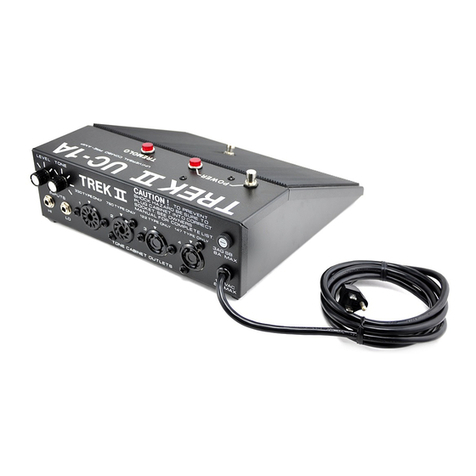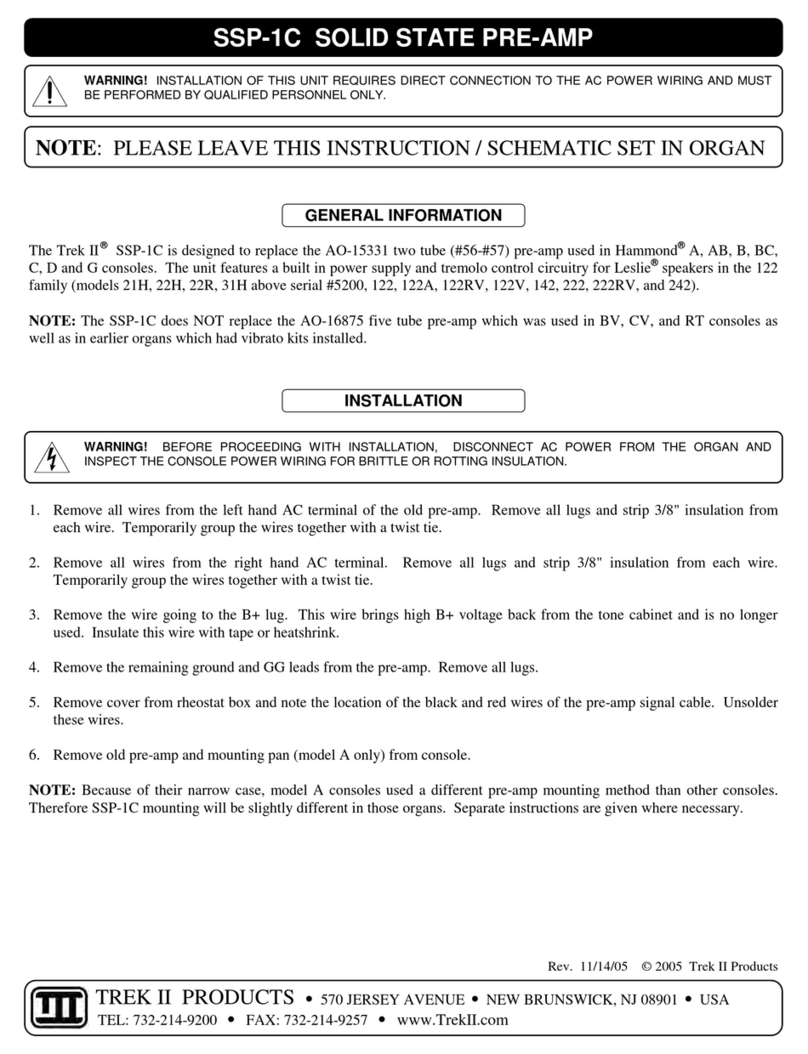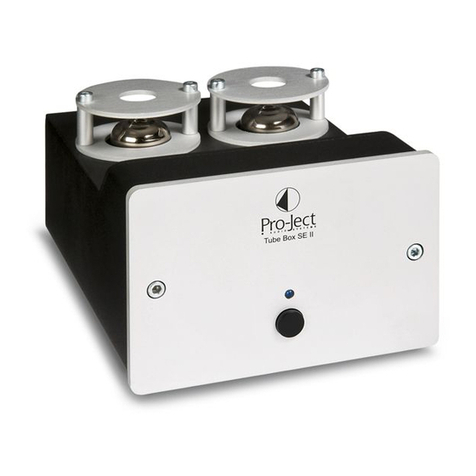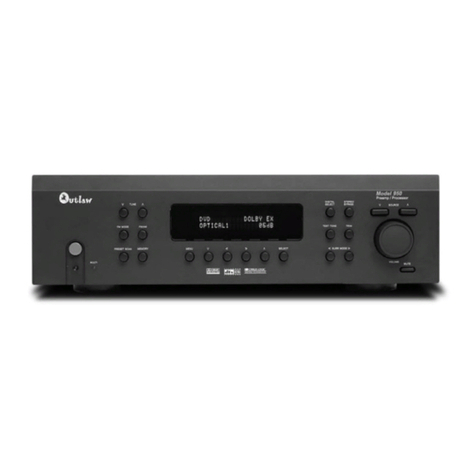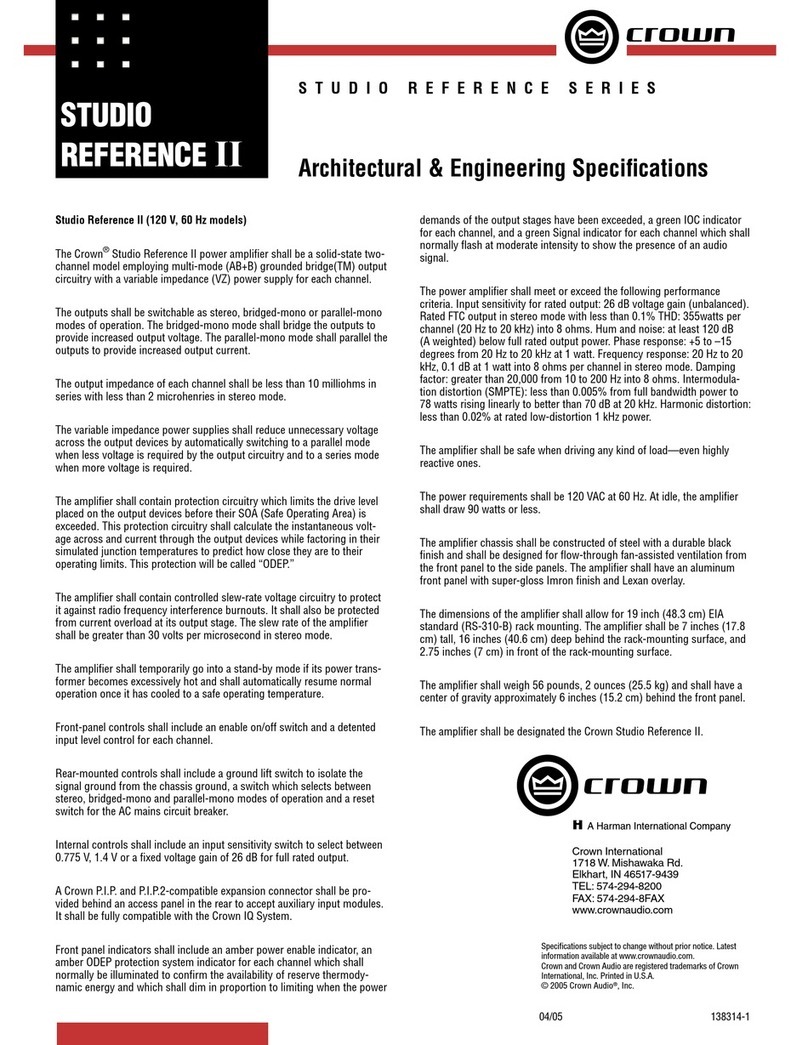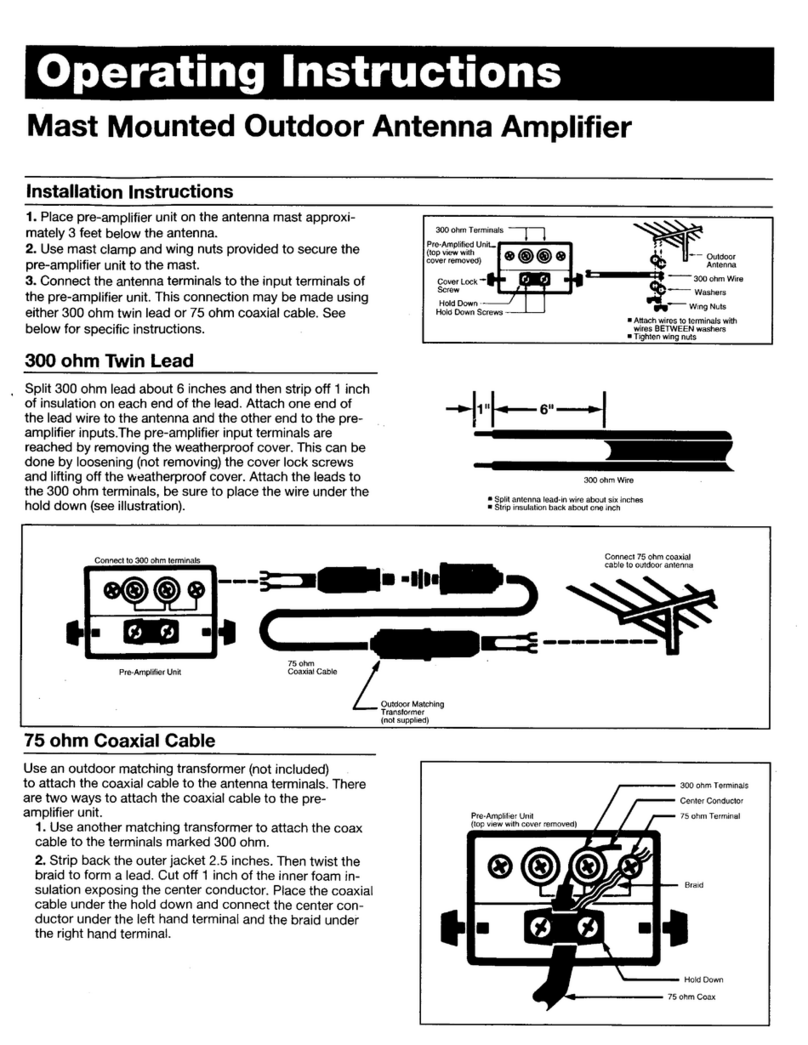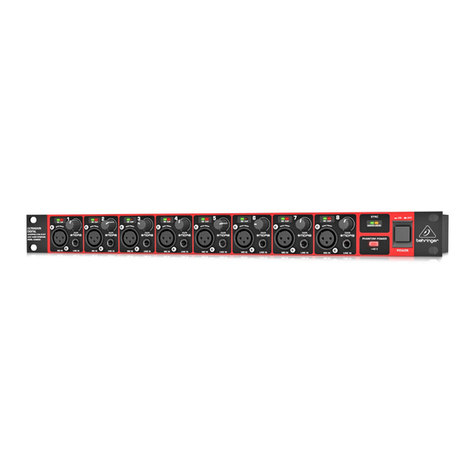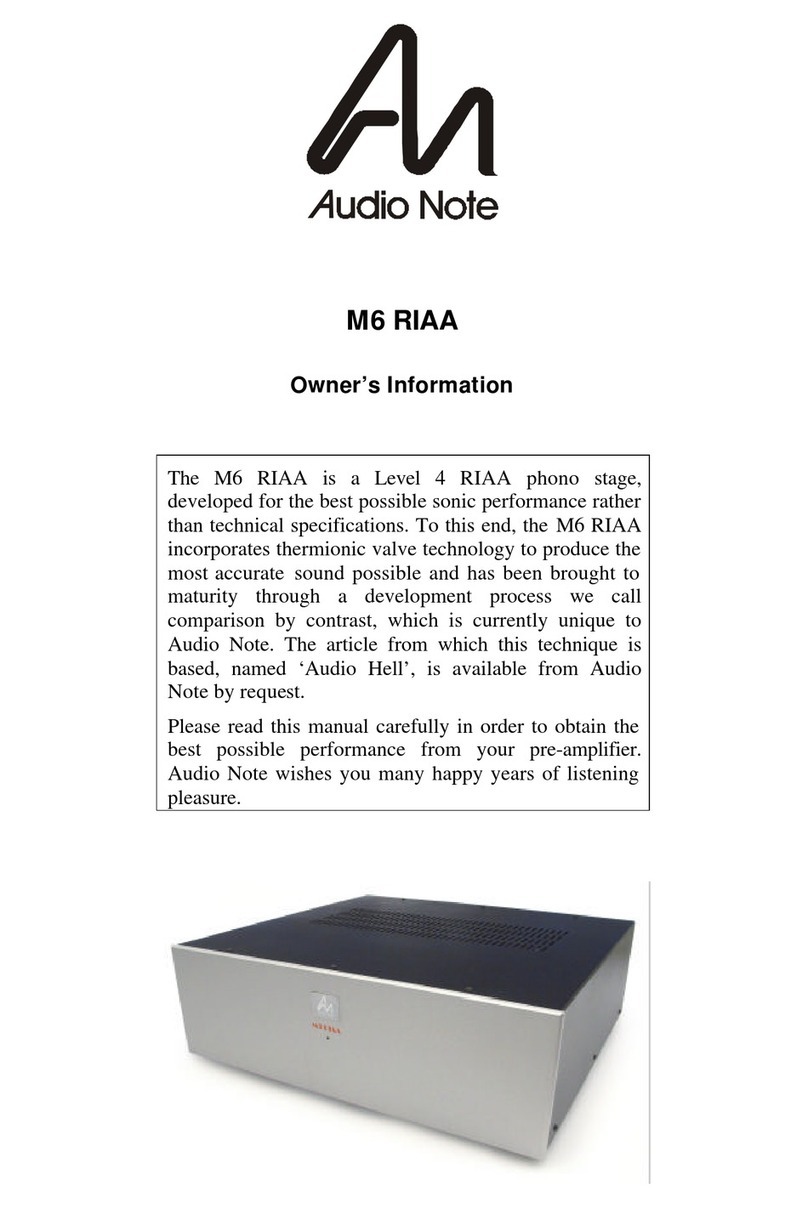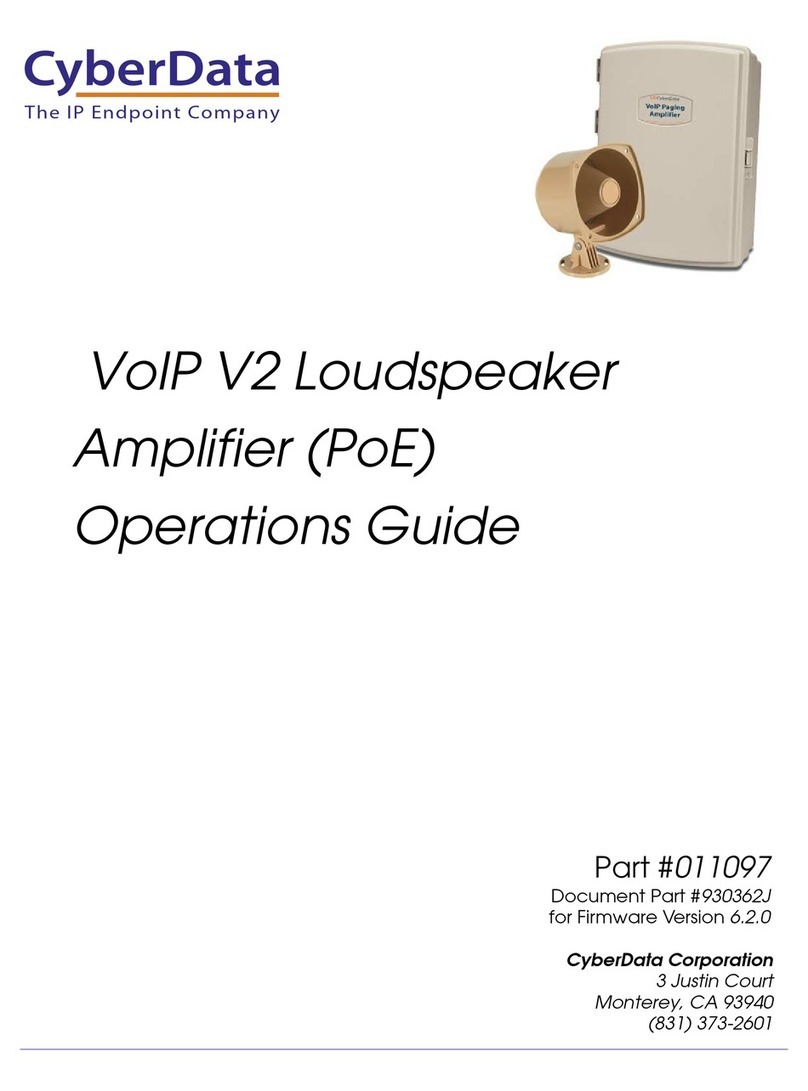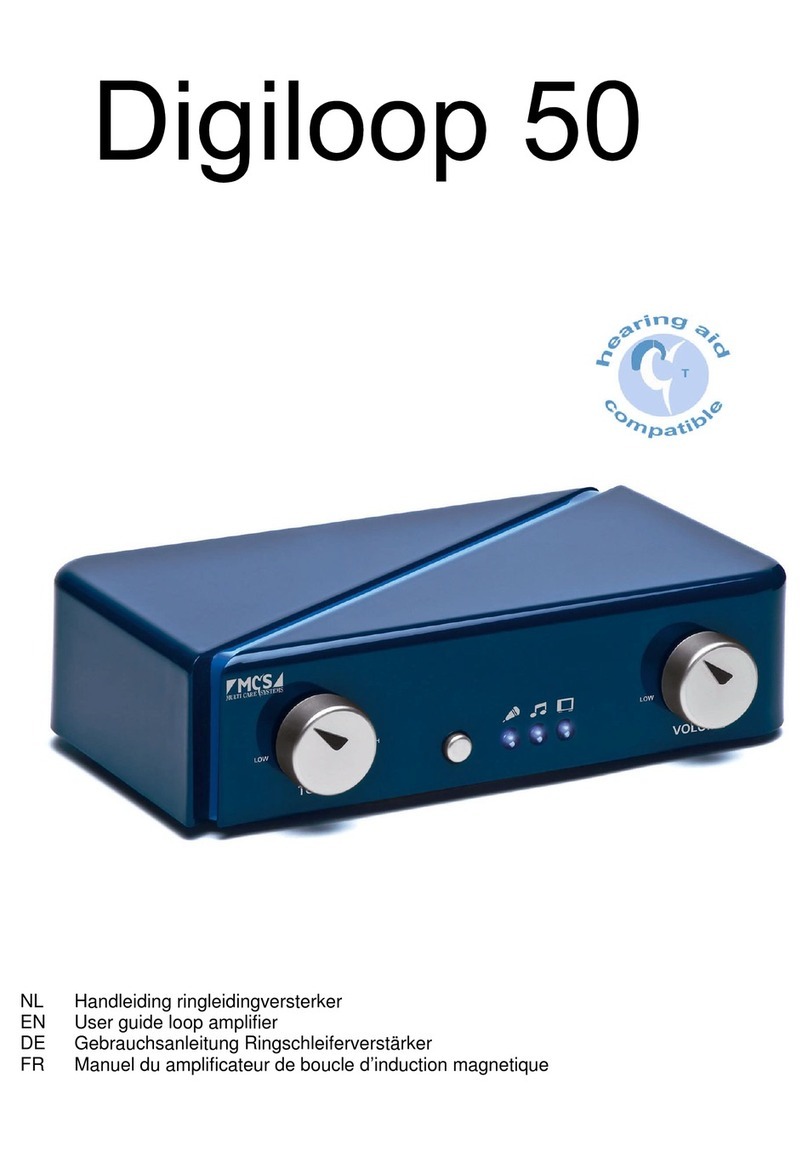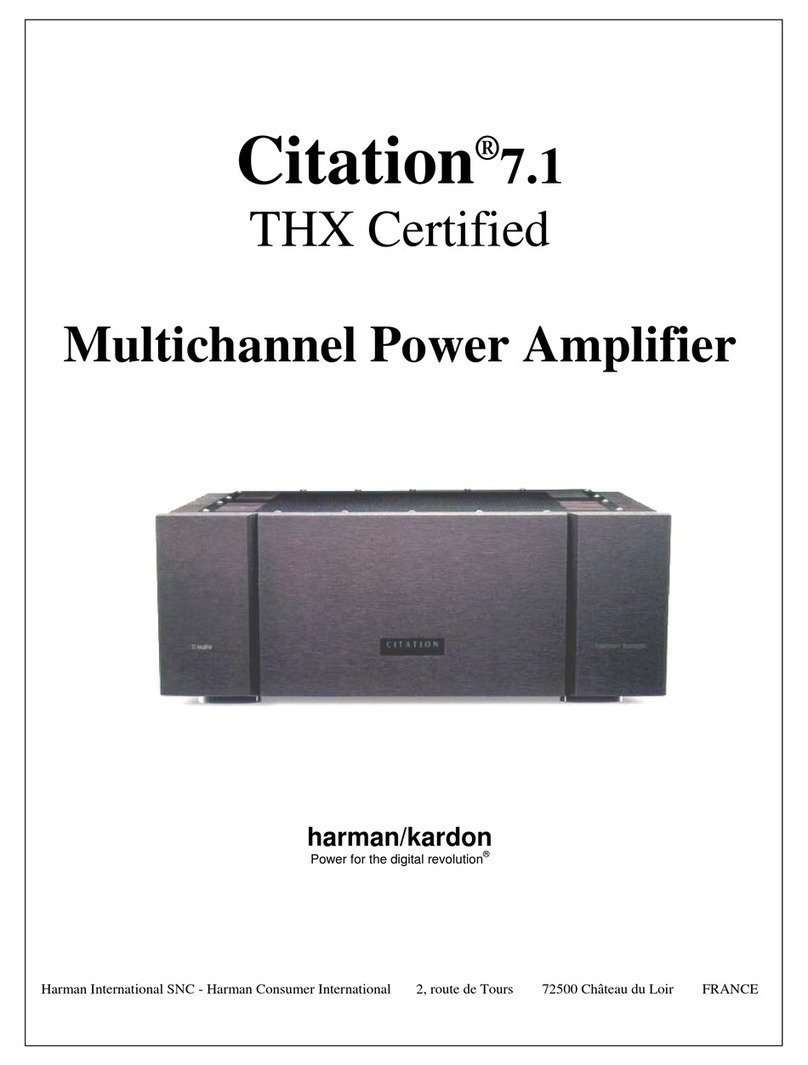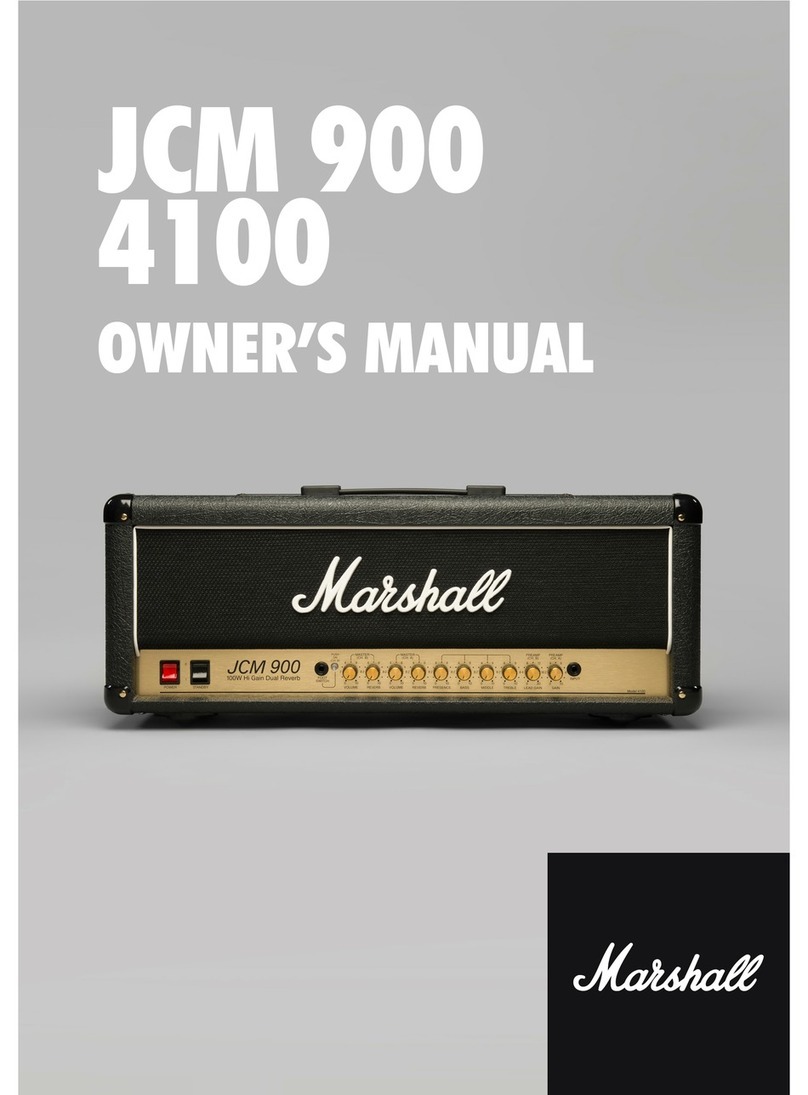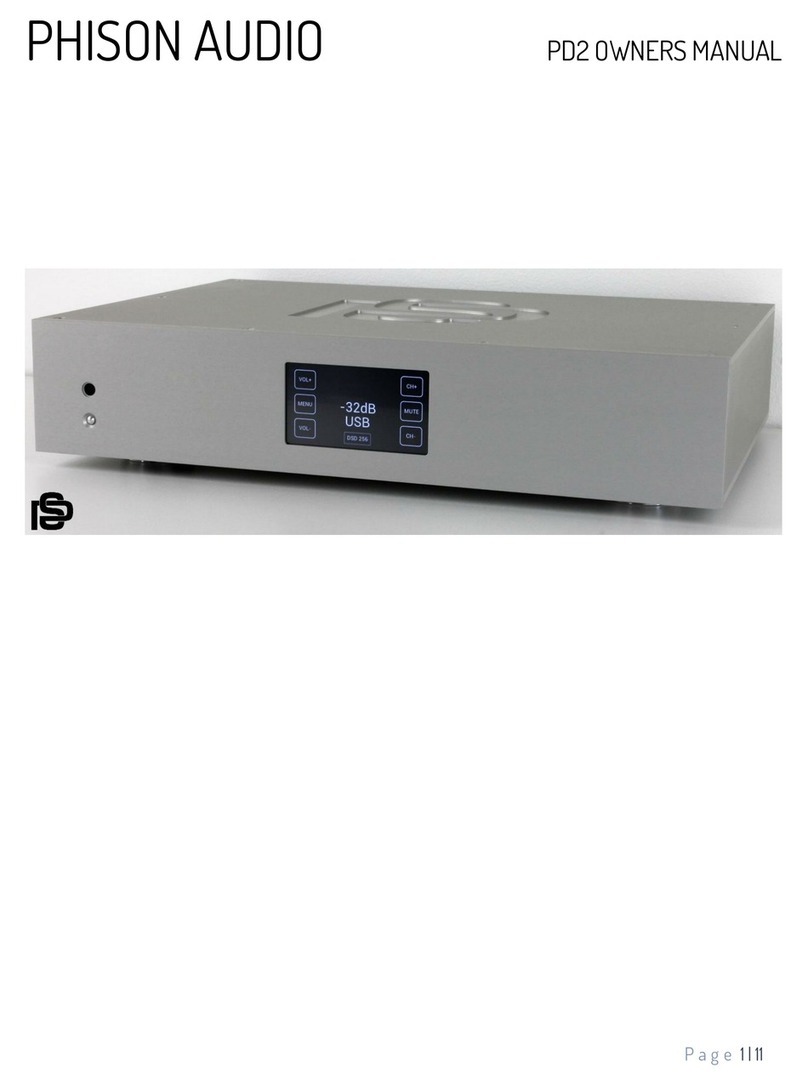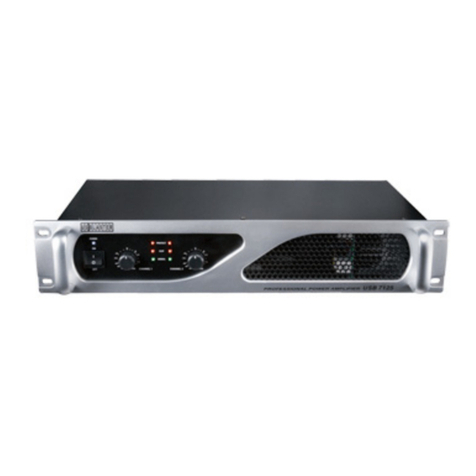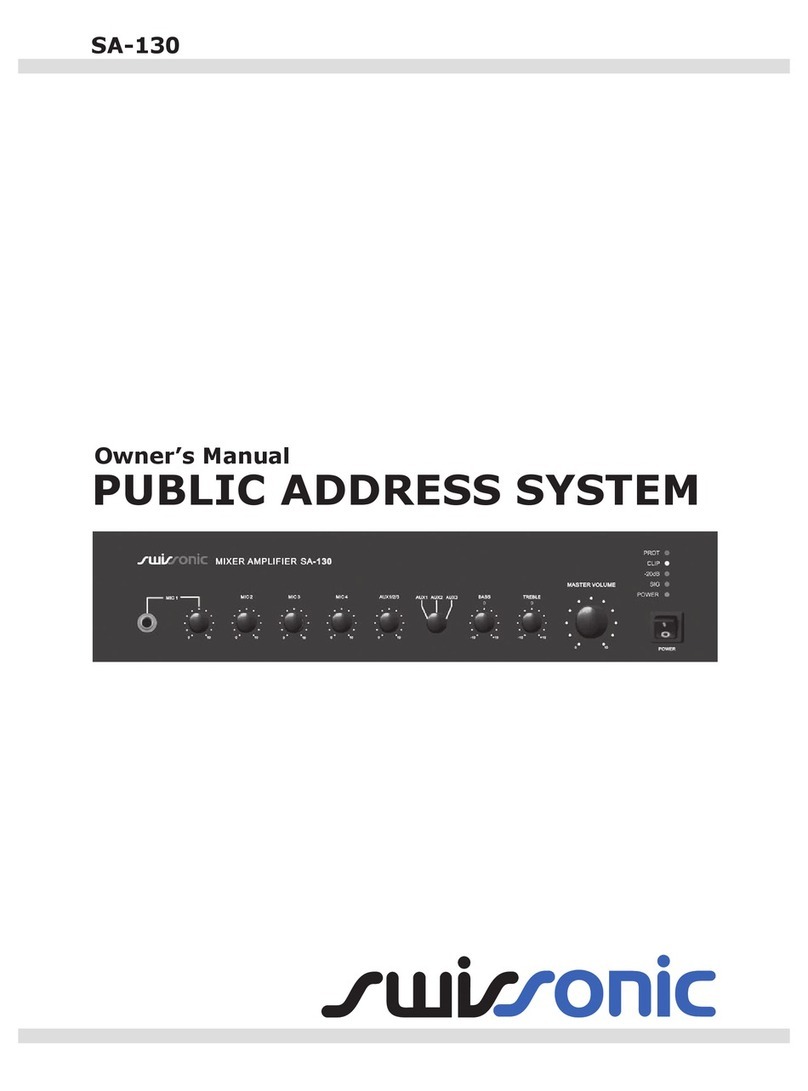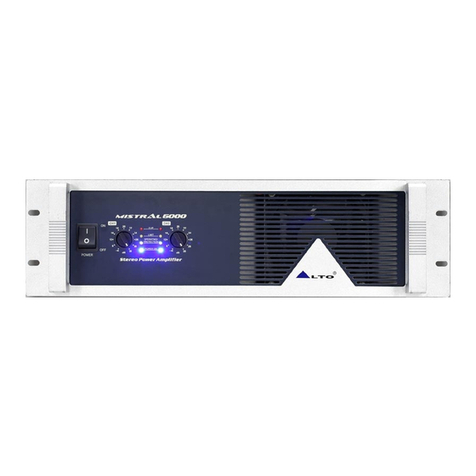Trek II SSP-3A-1 User manual

The Trek II®SSP-3A solid state pre-amp is designed to replace the original tube pre-amps in standard Hammond®consoles.
In addition to basic pre-amp replacement, all units feature built in percussion circuitry, reverberation, auto power on
circuitry for 11 pin Leslie®speakers and built in tremolo control circuitry for Leslie speakers in the 122 family (models 21H,
22H, 22R, 31H above serial #5200, 122, 122A, 122R, 122RV, 122V, 142, 222, 222RV, and 242). Although not used in
normal installations, all units also have provisions for using a floor type (remote) swell control. The SSP-3A may also be
ordered with optional features including Auxiliary amplifiers, Effects loop, Remote tone and percussion controls. These
items, as well as hook up details for many other Leslie models are covered after the normal installation instructions.
Because of both electrical and mechanical variations in different vintage Hammond organs, the SSP-3A is available in a
number of different versions. The SSP-3A-1 version is specifically designed to replace the AO-28 pre-amp used in B-3, C-3,
D-152, and RT-3 model organs ONLY.
1. Remove original pre-amp, Leslie 8000 kit, if present, and reverb, if present.
2. Place the 3/8" lockwasher on the swell pot. Install the pot on the L bracket so that the locating tab engages the index
hole. Secure using 3/8" nut. Mount the bracket to the back of the pre-amp chassis, using 2) #6 x 1/4" screws.
SSP-3A-1 SOLID STATE PRE-AMP
GENERAL INFORMATION
WARNING! INSTALLATION OF THIS UNIT REQUIRES DIRECT CONNECTION TO THE AC POWER WIRING AND MUST
BE PERFORMED BY QUALIFIED PERSONNEL ONLY.
NOTE: PLEASE LEAVE THIS INSTRUCTION / SCHEMATIC SET IN ORGAN
COMPATIBILITY
INSTALLATION
WARNING! BEFORE PROCEEDING WITH INSTALLATION, DISCONNECT AC POWER FROM THE ORGAN AND
INSPECT THE CONSOLE POWER WIRING FOR BRITTLE OR ROTTING INSULATION.
TREK II PRODUCTS 570 JERSEY AVENUE NEW BRUNSWICK, NJ 08901 USA
TEL: 732-214-9200 FAX: 732-214-9257 www.TrekII.com
Rev. 06/06/05 © 2004 Trek II Products
1234SWELL POT
L BRACKET
WHITE
ORANGE
VIOLET

3. Mate the 4 pin connector at the end of the white, violet, and orange swell harness with P-4
NOTE: The four grommets in the top of the SSP-3A chassis will be called #1, #2, #3 and #4 (from left to right).
4. Run the swell harness wires up through the #1 grommet, along the back of the chassis, through the nylon clips, to the
swell pot. Trim and strip leads. Solder the wires as follows: White to the lug nearest the back of the chassis, violet to
the center lug, and orange to the lug nearest the open side of the chassis.
5. Slide the swell arm bushing over the shaft of the swell pot and align the chassis assembly so that the swell rod is in the
center of the clearance hole in the generator shelf. Hold chassis in this position and operate the swell pedal and linkage
up and down, being sure that at no point in the travel does the swell rod rub against the shelf. Mark the 4 mounting hole
locations, but do not secure chassis at this time.
NOTE: Pre-amp wiring will be easier if the chassis is temporarily laid on its back. Refer to the 11 x 17 installation layout
sheet for the following steps.
6. If the organ has a pilot lamp, route its yellow wires through the #1 grommet and connect one to each of the PILOT LT.
terminals.
7. If a Leslie in the 122 family is being used, route the tremolo switch wires through the #2 grommet. Connect one
conductor to the pre-amp GROUND terminal and one conductor to the LC terminal.
NOTE: If both Leslie and Hammond tone cabinets are being used it will be necessary to run separate black and red signal
wires for the second outlet.
8. Route the black, red and brown outlet box wires through the #3 grommet. Connect the brown wire to the pre-amp
GROUND terminal.
9. If the organ has an outlet for a Leslie in the 122 family, connect its black and red signal wires to the G1 and G2
terminals. If the organ has an outlet for a Hammond tone cabinet, connect its black and red signal wires to the G3 and
G4 terminals.
10. Route the solid brown vibrato drive wire through the #3 grommet and connect to the C terminal.
11. Route the shielded green and yellow cable without a ground termination through the #4 grommet. Connect the green
wire to the F terminal. Connect the yellow wire to the E terminal.
12. Route the shielded black cable through the hole nearest the D terminal. Connect the inner conductor to the D terminal.
NOTE: Do NOT alter the length of this cable. Poor balance between the vibrato and non-vibrato channels will result.
13. Route the remaining shielded yellow and green cable through the hole nearest the A and B terminals. Connect the
yellow wire to the A terminal and the green wire to the B terminal.
14. Route the green shielded wire through the hole nearest the P terminal. Connect the inner conductor to the P terminal.
15. Secure the ground terminations of the shielded wires installed in steps 12-14, with 4-40 x 1/4" screws.
16. Route the percussion harness through the upper notch in the pre-amp chassis and connect one yellow wire to the L
terminal, one yellow wire to the N terminal, the blue wire to the K terminal, the brown wire to the J terminal and the
green wire to the H terminal. The red wire will no longer be required and should be insulated.
17. Position chassis upright in mounting location. Replace the swell arm bushing over the shaft of the swell pot. Again, be
sure that at no point in its travel does the swell rod rub against the shelf. Secure chassis 4) #8 x 1/2" screws.
-2-

18. Mount the reverb control bracket under the left side of the front rail using 2) #6 x 1/2" screws.
NOTE: Later organs had notched front rails. To allow the control bracket to mount properly on the uneven surface of this
type front rail, use the enclosed aluminum spacer between the control bracket and front rail.
19. Route the reverb control cable to the rear of the organ and through the lower notch in the pre-amp chassis. Mate the 4
pin connector with the 4 right most pins of P-2.
NOTE: The 9BB2C1A reverb spring unit supplied with this pre-amp is specifically designed to be mounted with its open
side up. Other mounting orientations will generally NOT give satisfactory results. If the organ is being made portable, or
there is some other reason why the reverb can not be mounted this way, contact the factory for further instructions.
20. Remove the foam packing block from the reverb spring unit. Install a brass bushing in each of the 4 reverb unit
grommets. Position the reverb unit open side up, with the output end towards the right under the console top. Secure the
unit using a #8 x 3/4" screw through each of the grommeted holes.
21. Route the cable from the reverb unit through the lower notch and mate the 4 pin connector with the 4 left most pins of
P-2.
22. Connect the short zipcord from the supplied AC power socket as follows:
Locate the blue and grey wires from the outlet box and the blue and grey wires from the generator line panel. Strip 3/8"
insulation from each wire. Mate the two blue wires along with one conductor of the zipcord with a yellow wire nut.
Mate the two grey wires along with the remaining zipcord conductor with a yellow wire nut.
23. Insert the AC plug of the SSP-3A into the AC power socket.
24. Dress all leads and secure where necessary with supplied twist ties. Reconnect AC power to organ.
25. Turn organ on. Hold a note down and adjust the swell linkage as follows: Set the swell pedal at its softest position.
Temporarily slide the swell arm off the swell control. Rotate the pot shaft so that the wiper is at the -30V (white wire)
end of the control. Slowly advance it until the organ volume just starts to increase. Slide swell arm back onto the
control and tighten the set screw.
26. Adjust percussion level and tone controls to customer preference.
NOTE: Do NOT disturb the null or offset adjustments, they have been set at the factory for optimum performance and will
not require adjustment unless components in the pre-amp have been replaced.
27. Attach cover, being sure that none of the wires passing through the notched openings are pinched.
This completes normal installation.
-3-

If the organ is being made portable or if the customer prefers, the SSP-3A can function with a remote floor type swell pedal.
The pedal must use a 100K linear taper pot and give full pot rotation with minimum resistance occurring at maximum swell.
The Ernie Ball model 6166 pedal works very well in this application, but must first have its pot changed to 100K. The
special long shaft pot, as well as complete ready to use pedals are available from Trek II Products.
If a floor type pedal is used, delete steps 2, 3, 4, 5, & 25 of installation instructions and instead:
A. Locate the RS jumper near P-4 of the SSP-3A circuit board. Move the jumper to the position indicated by the arrow.
B. Insert the terminal at the end of the supplied black wire into the vacant location in the 4 pin swell harness connector.
Remove the white and orange wires from the connector.
C. Mate the swell harness connector with P-4.
D. Mount a 1/4" shorting jack in a convenient location. Route the violet and black wires to the jack and wire as shown
below.
E. Connect the swell pedal to the organ with 1/4" patch cord.
NOTE: The organ will play at full volume when the swell pedal is unplugged from the console.
When ordered with the auxiliary amplifier option, the SSP-3A is supplied with two auxiliary amplifier channels, AUX-1 and
AUX-2. Each has its own input, level controls, and output. The gain of these amplifiers tracks with the organ swell control
and allows instruments such as synthesizers, bass units, rhythm units, and electric pianos to be played through their own
amplifier and speaker system, but under control of the organ swell pedal. In addition, if desired, either or both of the inputs
can be routed through the organ speaker system by moving its jumper plug on the SSP-3A board. When configured this way,
the AUX-1 input will be expressed, and the AUX-2 input will be un-expressed. Setup and operation procedure for the
auxiliary amplifiers is provided with the input / output (I/O) enclosure.
REMOTE SWELL CONTROL
ADDITIONAL FEATURES AND OPTIONS
-4-
AUXILIARY AMPLIFIERS
MAXIMUM
SWELL
100K
BLACK
VIOLET
REMOTE SWELL PEDAL
1/4" PHONE JACK
1/4" PHONE JACK
CONSOLE SWELL WIRING
8
7
6
5

Although standard Hammond tone cabinets or Leslie model 122s are recommended, many other successful output
configurations are possible. When using one of the Leslies listed below, mount the appropriate receptacle in the organ outlet
box and wire as shown.
____________________________________________________________________________________________________
OUTLET WIRING FOR LESLIE MODELS:
122XB, 315, 330, 415, 422, 615, 715, 716, 722, 723, 740, 750, 771, 815, 820, 822, 840, 860, 912, 914
____________________________________________________________________________________________________
OUTLET WIRING FOR LESLIE MODELS:
760, 770, 900, 910, 925
____________________________________________________________________________________________________
ADDITIONAL OUTPUT CONFIGURATIONS
-5-
TREMOLO
TS-2 (OR OTHER) TREMOLO SWITCH
CHORALE
78S9 SOCKET
(REAR VIEW)
78S11 SOCKET
(REAR VIEW)
12
3
4
5
6
7
89
VIOLET
WHITE
BLACK
INSULATE WITH HEAT SHRINK TUBING
RED
BROWN GROUND
G4 (SIGNAL)
PRE-AMP
TERMINALS
GREY BLUE
SWITCHED
AC LINE
123
4
5
6
7
8
91011
TREMOLO
TS-2 (OR OTHER) TREMOLO SWITCH
CHORALE
GROUND
G4 (SIGNAL)
PRE-AMP
TERMINALS
RED
BROWN
VIOLET
WHITE
BLACK
GY/WHITE RY (RELAY)

____________________________________________________________________________________________________
OUTLET WIRING FOR LESLIE MODELS:
44W, 45, 46W, 47, 145, 147, 147A, 147RV, 245, 247, 247RV
NOTE: LESLIES IN THIS GROUP MUST HAVE THEIR CONSOLE LOAD SELECTOR SET TO OPEN
____________________________________________________________________________________________________
OUTLET WIRING FOR LESLIE MODELS:
51, 251, 351
____________________________________________________________________________________________________
WIRING FOR LINE OUTPUT
____________________________________________________________________________________________________
-6-
WARNING! ALL RECEPTACLES
WITH THIS WIRING MUST BE
CLEARLY MARKED "WIRED
FOR 147 TYPE ONLY !"
WARNING! ALL RECEPTACLES
WITH THIS WIRING MUST BE
CLEARLY MARKED "WIRED
FOR 251 TYPE ONLY !"
G4 (SIGNAL)
GROUND
PRE-AMP
TERMINALS
RED
BROWN
5K
OUTPUT LEVEL
1/4" PHONE JACK
OR PREFERRED CONNECTOR
1K
2
3
4
516
TREMOLO
TS-2 (OR OTHER)
TREMOLO SWITCH
RED G4 (SIGNAL)
GROUND
BROWN
PRE-AMP
TERMINALS
BLUE
GREY
SWITCHED
78S6 SOCKET
(REAR VIEW)
AC LINE
CHORALE
2
3
4
516
TREMOLO
TS-2 (OR OTHER)
TREMOLO SWITCH
RED G4 (SIGNAL)
GROUND
BROWN
PRE-AMP
TERMINALS
BLUE
GREY
SWITCHED
78S6 SOCKET
(REAR VIEW)
AC LINE
CHORALE
Table of contents
Other Trek II Amplifier manuals
